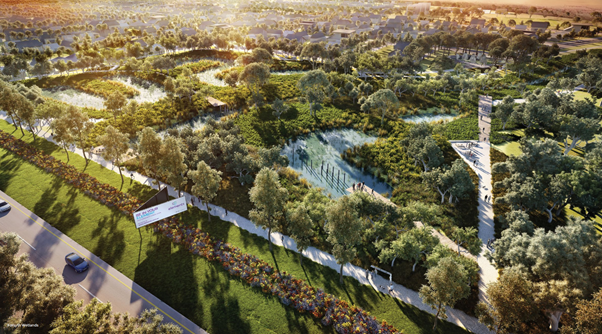
As planners, we strive to facilitate communities that are enjoyable and healthy to live in. Key elements for a successful community, or indeed any community, include providing services within reach, the capacity to access the wider metropolitan area, environmentally sustainable house design and enough open space for meaningful areas of recreation and vegetation.
The Guardian has recently published an article examining the Elements subdivision in Truganina and points out that when some or all of these crucial parts of the equation come many years after the population has moved in (if they can at all), the result is that residents are left with critical economic and environmental vulnerabilities.
The resident interviewed for the article points out that since the local train station has not been built, it takes him hours to commute to work. Furthermore, the nearby site that had been set aside for a school that he was going to send his children to has now received planning approval as a residential subdivision.
The article also noted that the estate had been presented as very leafy however in reality the dwellings take up so much room on each property that there is a lack of opportunity for the planting of trees in front or rear yards.
The images below encapsulate the vast gap between what was promised and what has been delivered to date.
We agree with the planning experts interviewed for this article that there needs to be a higher level of accountability to both developers and governments for large scale developments to provide much needed services and room for green infrastructure at a very early stage or it may never materialise.
A broken dream: outer Melbourne has affordable houses but no train or school | Housing | The Guardian

Latest Projects
|
O'Loughlan Street, ORMOND Heritage |
|
Bank Street, SOUTH MELBOURNE Single Dwelling |
Latest Blog
|
Regional Sprawl: Ballarat Case Study |
|
Melbourne Population Decline |
